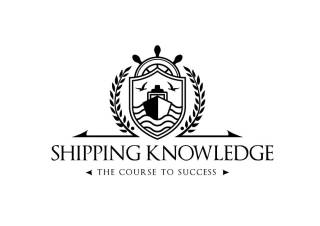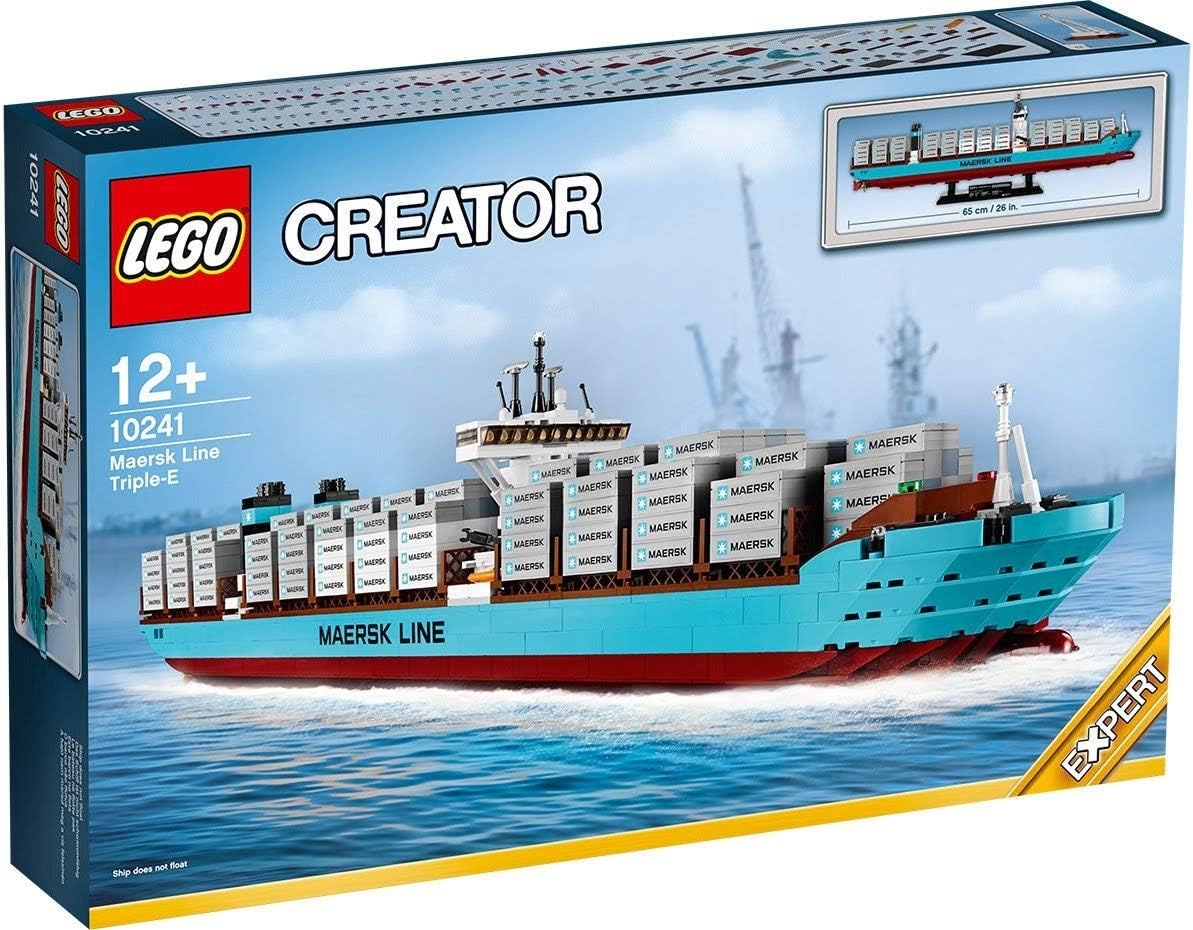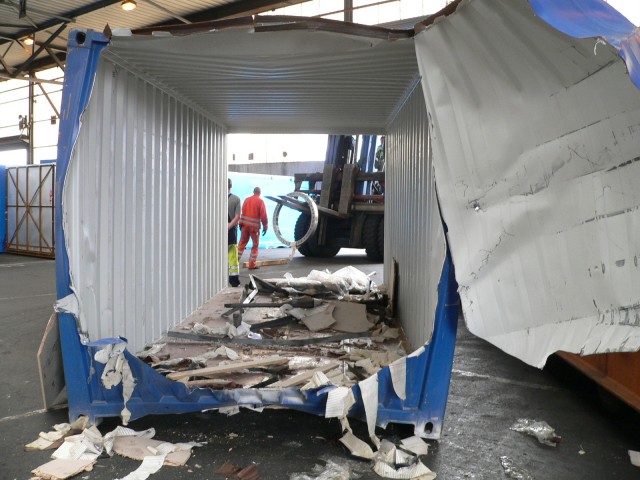50 (Fifty) Essential Shipping Terms
1. Aframax. Tanker carrying around 0.5 million barrels of oil, but usually applied to
any tanker of 80,000–120,000 dwt (name derived from old AFRA chartering
range).
2. Auxiliary engines. Small diesel engines on the ship used to drive alternators providing
electrical power. They generally burn diesel oil. Ships generally have
between three and five, depending on electricity requirements.
3. Ballast. Sea water pumped into carefully located ballast tanks, or cargo spaces,
when the ship is not carrying cargo, to lower the ship in the water so that the propeller
is sufficiently submerged to perform efficiently.
4. Berth. Designated area of quayside where a ship comes alongside to load or discharge
cargo.
5. Bulk carrier. Single-deck ship which carries dry cargoes such as ore, coal, sugar
or cereals. Smaller vessels may have their own cranes, whilst larger sizes rely on
shore based equipment.
6. Bare boat charter. Similar to a lease. The vessel is chartered to a third party who
to all intents and purposes owns it for the period of the charter, provides the crew,
pays operating costs (including maintenance) and voyage costs (bunkers, port dues,
canal transit dues, etc.), and directs its operations.
7. Bunkers. Fuel oil burned in ship’s main engine (auxiliaries use diesel)
8. Capesize. Bulk carrier too wide to transit the Panama Canal. Usually over 100,000
tonnes deadweight, but size increases over time, currently 170,000–180,000 dwt.
9. Charterer. Person or company who hires a ship from a shipowner for a period of
time (time charter) or who reserves the entire cargo space for a single voyage
(voyage charter).
10. Classification society. Organization, such as Lloyd’s Register, which sets standards for
ship construction; supervises standards during construction; and inspects the hull and
machinery of a ship classed with the society at regular intervals, awarding the ‘class certificate’
required to obtain hull insurance. A ship with a current certificate is ‘in class’.
11. Container. Standard box of length 20 or 40 ft, width 8 ft and height 8 ft 6 in. High
cube containers are 9 ft 6 in. high, and container-ships are usually designed to carry
some of these.
12. Container-ship. Ship designed to carry containers, with cell guides in the holds into
which the containers are lowered. Containers carried on deck are lashed and secured.
13. Compensated gross ton (cgt). Measure of shipbuilding output based on the gross
tonnage of the ship multiplied by a cgt coefficient reflecting its work content (see
Appendix B).
14. Deadweight (dwt). The weight a ship can carry when loaded to its marks, including
cargo, fuel, fresh water, stores and crew.
15. Freeboard. Vertical distance between waterline and top of hull.
16. Freight rate. Amount of money paid to a shipowner or shipping line for the carriage
of each unit of cargo (lonne, cubic metre or container load) between named ports.
17. Freight alt kinds (FAK). The standard rate charged per container, regardless of
what commodity it is carrying, e.g. FAK rate of $1500 per TEU.
18. FEU. Forty-foot container (see TEU).
19. Gas tanker. Ship capable of carrying liquid gas at sub-zero temperatures. Cargo is
kept cold by pressure, insulation, and/or refrigeration of ‘boil-off gas’ which is
returned to the cargo tanks (see Chapter 14).
20. Gross ton (gt). Internal measurement of the ship’s open spaces. Now calculated
from a formula set out in the IMO Tonnage Convention.
21. Handy bulker. Bulk carrier at the smaller end of the range of sizes associated with
this type of ship, typically up to 30,000–35,000 tonnes deadweight. Most have their
own cargo-handling gear.
22. ice class 1A. Ship certified to transit ice of 0.8 m thickness.
23. IMO. International Maritime Organization, the UN agency which is responsible for
maritime regulations.
24. Lay-up. This describes a ship that has been taken out of service because freight
rates are too low to cover its operating and maintenance costs Not a well-defined
condition, it often just means that the ship has not moved for, say, 3 months.
25. Lashing. Used with twist-locks to stop containers moving in heavy seas. Lashing
wires may be secured, for example, from the top corners of the first tier and bottom
corners of the second tier.
26. LIBOR. London Inter-bank Offered Rate, the interest rate at which banks raise
funds on the eurodollar market.
27. Lightweight (light displacement tonnage, lwt). Weight of a ship’s hull, machinery,
equipment and spares. This is the basis on which ships are usually sold for
scrap, e.g. $200 per lwt.
28. MARPOL. International Convention for the Prevention of Pollution from Ships
(see Chapter 16).
29. Off-hire. Time, usually measured in days, during which charter hire payments are
suspended because the vessel is not available to trade, for example because of a
breakdown or routine repair time.
30. Operating costs (OPEX). Expenses involved in the day-to-day running of the ship
and incurred whatever trade the ship is engaged in. These include crew wages
and expenses, victuailing, stores, spares, repairs and maintenance, lubricants, and
insurance.
31. P&l club. Mutual society which provides third party insurance to shipowner members.
32. Panamax. Bulk carrier which can transit Panama Canal where the lock width of
32.5 m is the limiting factor. Vessels of 60,000–75,000 tonnes deadweight fall into
this category. ‘Panamax’ is also used to refer to tankers of 60,000–70,000 deadweight.
33. Reefer. Insulated cargo ship for carrying refrigerated food, either frozen or chilled.
34. Reefer container. Insulated container for carrying refrigerated cargo. Some have
integral electric refrigeration plant run from a plug on the ship or shore facility.
Others receive cold air from central refrigeration unit on ship.
35. Seller’s commission. Fee or commission payable by a seller of a vessel to the
broker(s) who has secured her sale.
36. Service agreement. Agreement between container line and shipper to provide
freight transport on specified terms.
37. Shipbroker. Individual with current market knowledge who acts as intermediary
between buyers and sellers in return for a percentage commission on the transaction.
There are several types of these – for example, chartering brokers deal with
cargo; sale and purchase brokers buy and sell ships; newbuilding brokers place contracts
for new ships.
38. SOLAS. Safety of Life at Sea Convention. Important convention setting out the
safety regulations with which all merchant ships must comply (see Chapter 16).
39. Special survey. Mandatory examination of the ship’s hull and machinery carried
out every five years, or on a rolling basis, by the classification society with which
the vessel is classed.
40. Spot rate. Negotiated rate per unit (tonne, cubic metre, etc.) of cargo paid to the
shipowner to carry specific cargo between two ports, say US Gulf to Japan. Voyage
costs are paid by the shipowner.
41. String (of container-ships). The number of container-ships needed to maintain a
regular service on a specific route (‘loop’). For example, a string of four ships is
needed to run a transatlantic loop.
42. Suezmax. Tanker able to transit Suez Canal fully loaded; carries about 1 million
barrels of oil. Tankers of 120,000–200,000 dwt are grouped into this category.
43. Tanker. Ship designed for the carriage of liquid in bulk with cargo space consisting
of several tanks. Tankers carry a wide variety of products, including crude oil,
refined products, liquid gas and wine. Parcel tankers have a separate pump and
cargo lining for each tank so that many cargo parcels can be carried separately in
the ship.
44. TEU. Twenty-foot equivalent unit (a 40 ft container is 2 TEU).
45. Time charter. A transportation contract under which the charterer has the use of
the vessel for a specific period. A fixed daily or monthly payment is made for the
hire of the vessel, for example $20,000 per day. Under this arrangement, the owner
manages the day-to-day running of the ships, and pays the operating and capital
costs. The charterer pays fuel, port charges, loading/discharging fees and other
cargo-related costs, and directs the ship operations.
46. Time charter equivalent. The spot freight rate (e.g. $20 per tonne for a 40,000
tonne cargo) converted into a daily hire rate for the voyage (e.g. $20,000 per day)
by deducting voyage costs from the gross freight and dividing by the days on the
voyage, including necessary ballast time.
47. Tonne. Metric ton, equivalent to 1,000 kilograms or 2,240 lbs.
48. Twist-lock. Devices used to join and lock containers to those above and below them
by clamping the adjacent corner castings together. ‘Cones’ fit into apertures in the
corner castings and turn to lock them in place. Used with lashing wires and bars.
49. VLCC. Very large crude carrier, generally carries about 2 million barrels of oil, but
all tankers over 200,000 dwt are grouped into this category.
50. Voyage costs. The cost of fuel, port expenses and canal costs which are specific to
the voyage. On a voyage charter where the ports are specified they are generally
included in the negotiated spot rate and paid by the shipowner. On a time charter
where the ports are not known in advance they are paid by the charterer.






Nice piece of work.It’s really self explanatory.It very good especially for a new Maritime Student like me. Thanks!
I also wish you could be my mentor in this line of field.I would be glad if you could be….
Happy to be on the site but I unfortunately can´t find the courses. Would someone to give me a hand please
Good day!
Regret we have frozen the project at the moment. Expect to be live in Dec 2017 with basic shipping courses in English. Please support us on clicking the advertisements you find online. Its the only way we can get our expenses covered (not all of them unfortunately).
Subscribe to the list and you will be informed abt the new Free online courses. Also read the blog, you may find some data there already and we keep on posting.
Ahoi!